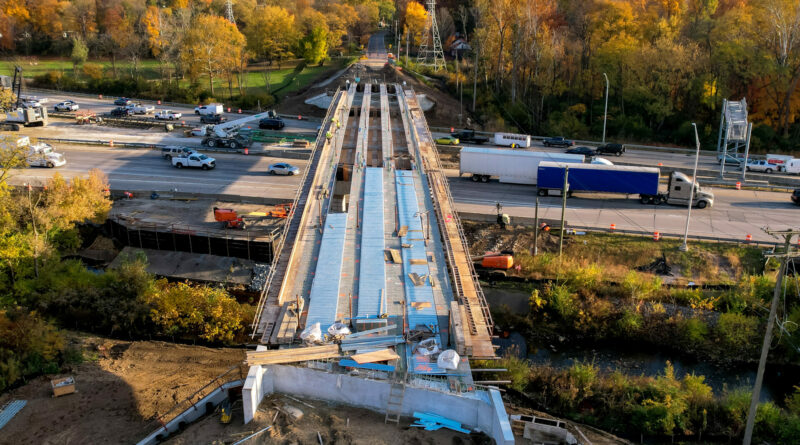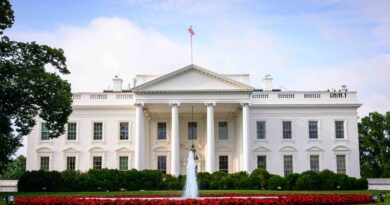Leveled Up Transportation in 2023
The Hoosier state set the stage for transportation planning with the purpose of world-class, integral infrastructure
 By Mike Smith
By Mike Smith
The Indiana Department of Transportation (INDOT) maintains more than 29,000 lane miles of pavement and over 5,700 bridges, making up a world-class transportation network serving hundreds of cities, towns and communities that more than 6.8 million Hoosiers call home. These integral pieces of infrastructure intertwine across the state, working together with local networks, to connect people with goods, services, friends and family, all while driving economic growth and improving quality of life.
In 2017, Governor Eric Holcomb and the Indiana General Assembly passed House Enrolled Act (HEA) 1002, also known as Next Level Roads, funneling $60 billion over 20 years to operate, maintain and improve state roads and bridges, calling on the Department of Transportation to fix what we have, finish what we started and plan for the future. This marked a shift in focus on building and maintaining transportation infrastructure in Indiana.
Nearly 90% of this dedicated funding is committed to improving the condition of existing roads and bridges, enhancing safety and addressing drainage issues, and the numbers show how we’re putting it to use. As part of HEA 1002, INDOT was charged to develop a 20-year, data-driven asset management plan, which initially included pavement and bridges and has grown to include traffic signals and small culverts and continues to expand.
At the onset, goals were set for 95% of state-maintained pavement and 98% of state-maintained bridges to be rated in fair or better condition by 2037. Over the past six years, Indiana has made significant progress toward those targets. In 2022, just over 94% of roads and nearly 97% of bridges met the fair or better condition ratings, compared to 89% of roads and 95% of bridges in 2017.
Targeted funding through Next Level Roads has allowed the agency to maintain its current assets and invest in preservation techniques and technology that help keep roads and bridges in good condition longer. However, asset condition is not the only focus, nor should it be. Factors related to the reduction of carbon emissions, equity and resiliency must also be considered as part of transportation planning and execution and are being further integrated into INDOT’s development and construction processes.
Maintaining a safe, reliable transportation network allows goods to be transported both near and far, and for all to experience all that Indiana has to offer.”
In addition to maintaining what we have, the agency is inching closer to completion of the I-69 Finish Line, one of the only new interstate construction projects in the nation. Progress will continue through the end of 2024, when the entire corridor opens to traffic, providing a safer, more direct route to and from the southwest part of the state, and points beyond. Early next year construction is set to begin on Indiana’s approach to a bi-state I-69 river crossing, with bridge construction to follow, further advancing and improving connectivity on a national and international scale.
Progress is also continuing on the South Shore and West Lake Corridor commuter rail projects, comprising the largest investment in public transit in Indiana history that will improve mobility in one of our largest urban areas near Chicago. We’re also working with the Department of Natural Resources and local entities to deliver $150 million in State trails through the Next Level Trails program, incentivizing collaboration, and partnership to accelerate trail connectivity across Indiana.
Looking ahead, a renewed focus on safety is emerging, not only for road crews and contractors but also for the motoring public. As an industry, transportation experts, officials and engineers are consistently looking for ways to improve, innovate and make roads safer for travel. However, driver behavior is a challenge we’re up against, especially post-pandemic as we see increased reckless and erratic driving, and growing numbers of fatalities and serious injuries on roadway networks across the country. In Indiana, we’re taking an all-hands-on-deck approach, leveraging relationships and opportunities with other state, local and industry partners to share our message of safety and make positive change.
All in all, transportation infrastructure is on the upswing in Indiana, and INDOT is doing its part to make the Hoosier state a destination to live, work and play. Maintaining a safe, reliable transportation network allows goods to be transported both near and far, and for all to experience all that Indiana has to offer.
Mike Smith is the commissioner of the Indiana Department of Transportation. He was previously a District Deputy Commissioner and CFO for the agency.



